One of the side-effects of the recent supremacy of superhero films has been the ways they have been stretched and mutated to encompass other styles and genres, sometimes successfully (Captain America: The Winter Soldier) and sometimes not (Thor: Love and Thunder). In the process they’ve tended to ignore the built in themes and subtext of the form — its intrigue with identity and what it means — except for the core nucleus power fantasy.
The most surface examples so engrained into specific characters they must be given some lip service survive — Peter Parker can only be his true self when he pretends to be someone else, Bruce Wayne can’t decide if himself or his alter-ego is his real personality — but any other facets have been hidden away since the day Robert Downey Jr. declared he was Iron Man.
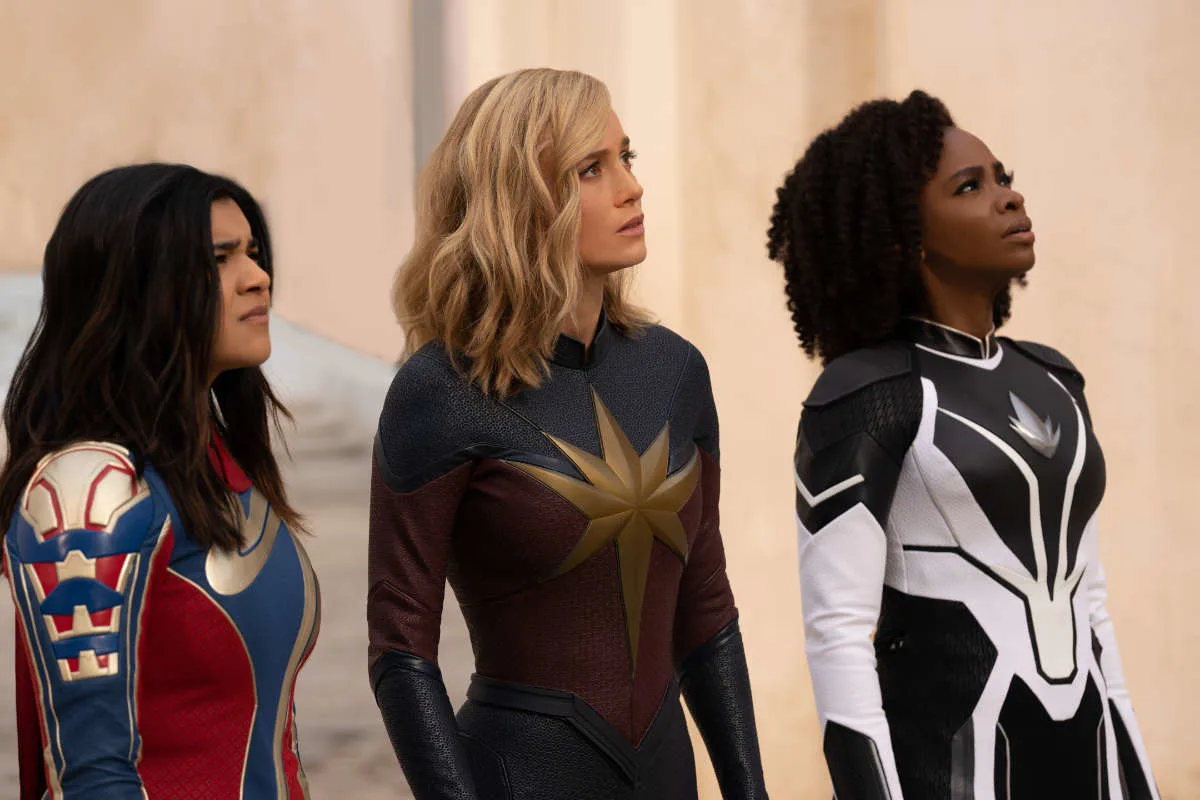
Secret Identities, the filmmakers declared, were a useless appendage the need for which had long since passed. With that decision went all option for deeper investigation into what had been a foundation stone of the fantasy, which may be why Nia DaCosta‘s embrace of the idea can only marginally prop up her unwieldy, awkward superhero team up The Marvels.
Rather than just follow up the on the adventures of Captain Marvel (Brie Larson) herself, DaCosta has split her narrative into a trinity of identities. Precocious teen, and long-time Danvers fan, Kamala Khan (Iman Vellani) still looks at these stories as light adventure and personal gratification with the rules of the source material taken at face value: it is important to have a mask and colorful costume and above all a code name because these things tell the world who you are rather than hiding it.
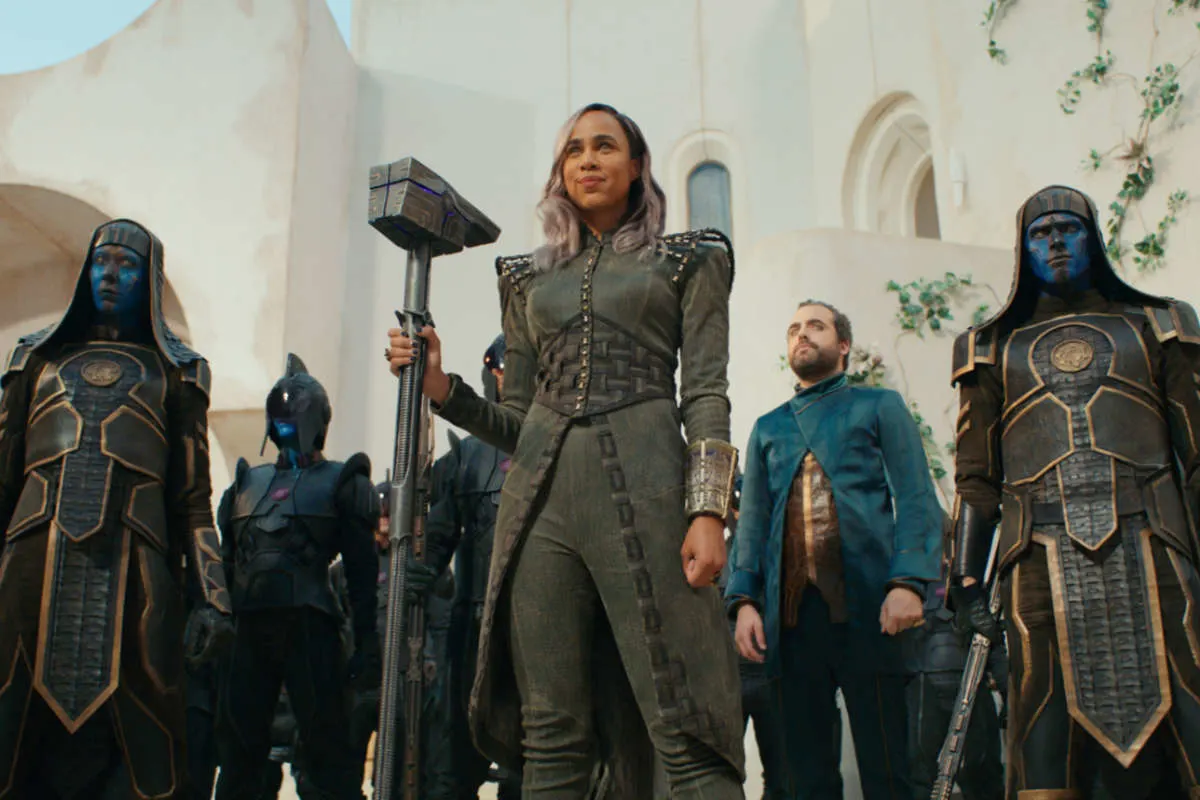
It’s an approach roundly rejected by Monica Rambeau (Teyonah Parris), who doesn’t want a superhero name or superhero responsibilities, just some hint on how to handle her estranged relationship with her ‘aunt’ Carol in the wake of her mother’s death. The separation is made more acute by Carol herself who has chosen the isolation of space as punishment for the bad choices which haunt her: inadvertently starting a civil war among the alien Kree leading to their near-extinction and her new nom de guerre “Annihilator.”
It’s a name Carol roundly rejects but can’t seem to escape from, not least because the remnants of the Kree won’t let her. Searching for ways to resuscitate her home planet, Kree survivor Dar-Benn (Zawe Ashton) discovers one of the lost Quantum Bands, twin to the decorated bangle that gives Kamala her powers and capable of opening great rend in space capable of destroying planets and even stars if left unchecked.
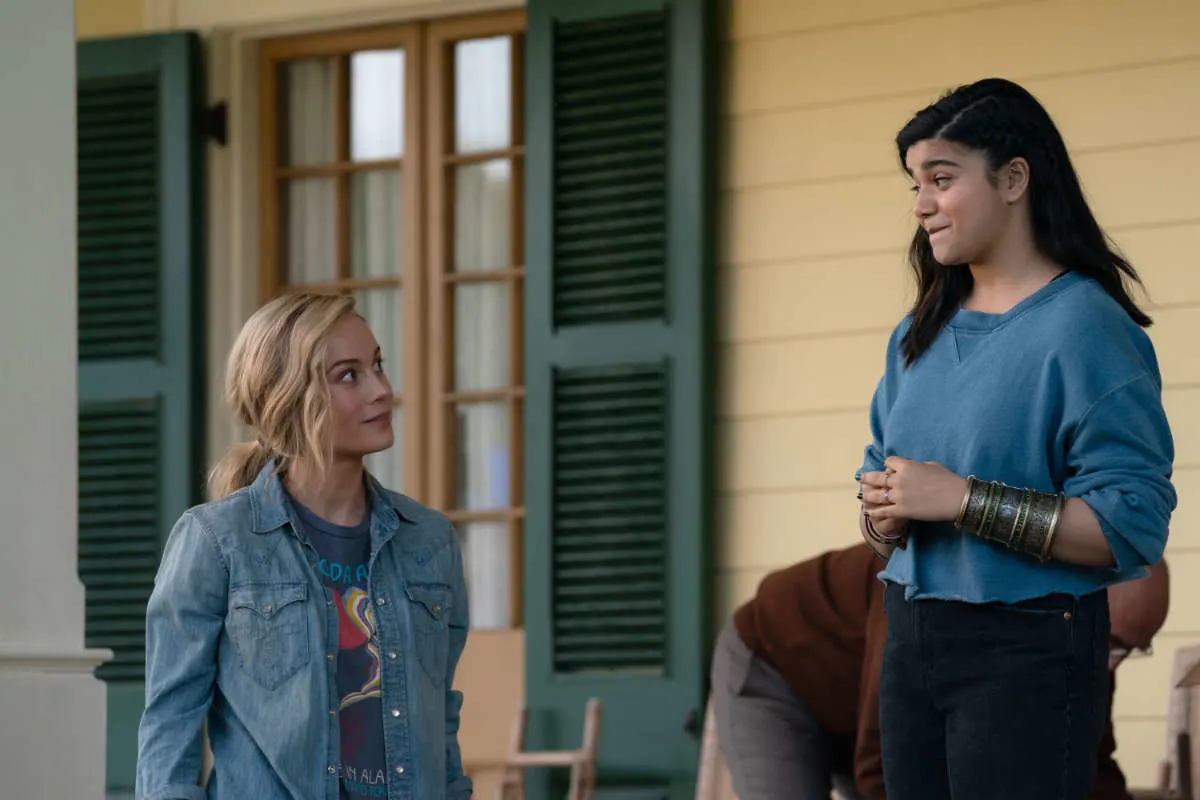
It also accidentally bonds the three Marvels together, ‘entangling’ their powers such that when they each activate their abilities at the same time they physically switch places no matter what they are doing at that moment. This being a Marvel movie that mostly means fighting blue aliens and shooting different shades of glowing light out of their hands. After a series of Comedy of Error near death experiences Carol and co. decide to stay as close together as possible as Carol travels the galaxy on the trail of the Kree.
It also forces each of them to confront their own specific identity choices with their impetus standing before them no longer an ideal but a flesh-and-blood human. Will Kamala discover Carol is far from the heroic archetype she has dreamed of, and more like the headstrong “Annihilator” persona Carol herself flees from?
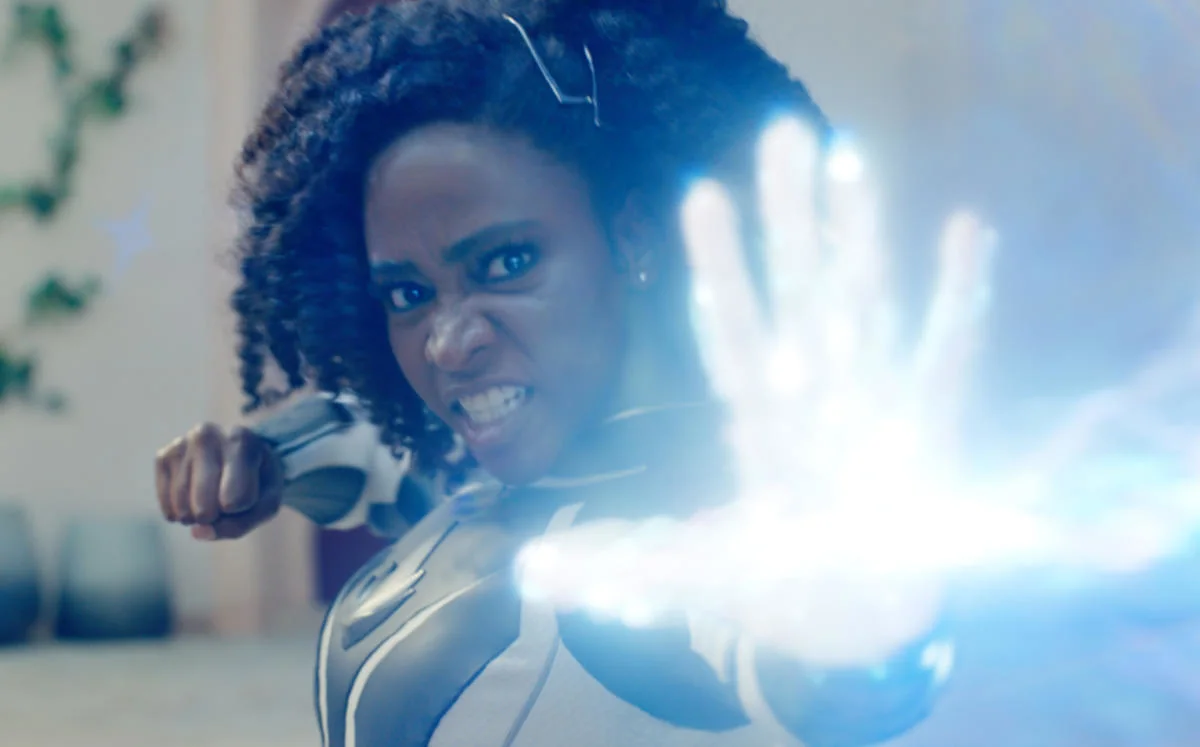
Will Monica accept the sacrifice Carol took on that caused the breaking of her promise to return to Earth, and in the process the need for such choices that Kamala naturally intuits? It’s a ripe field superhero comics have repeatedly plowed but superhero films have largely ignored. The alien armband that has bound them together has already merged their identity issues into a strange, fractured gestalt.
Why have they chosen the identifies they have? How sturdy are their choices in the face of life’s reality and what unintended consequences have they produced? When the three leads are given the space and time to confront these issues The Marvels briefly discovers its own identity.

Most of the time, though, the film is as displaced and fractured as its leads, bouncing from character introspection to family comedy to disaster film to musical with a manic pride. DaCosta and company have A LOT of ideas of what The Marvels could be and rather than settling on one of them it has decided to use them all.
No sooner are Kamalah’s parents whisked away from danger by superspy Nick Fury (Samuel L. Jackson) to his floating space station with equal amounts joy and nagging than the trio collectively reenacts the loss of Monica’s mother to cancer before flitting off to a water planet where Carol is a princess, and the populace can only communicate through song and dance. It’s an identity crisis its characters could only dream of.
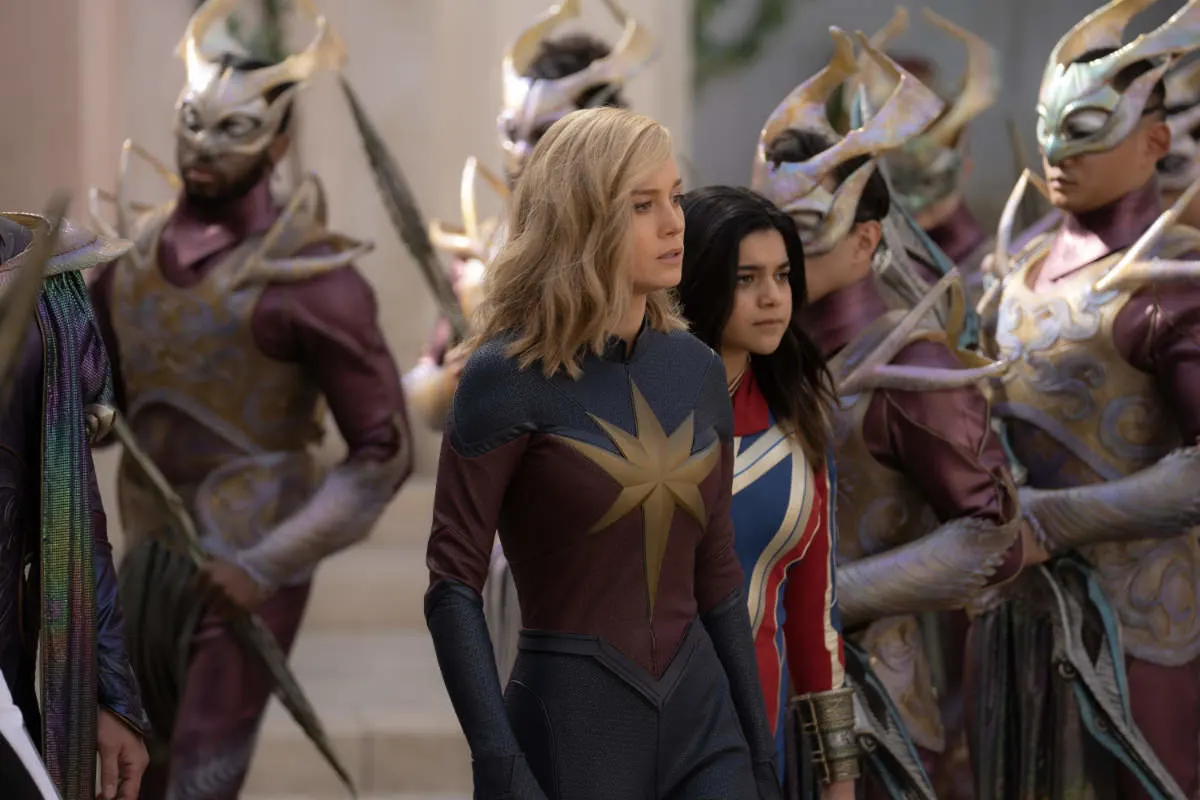
It allows for some charming bits of wackiness — cat-monsters attack to the thrum of Andrew Lloyd Webber and Larson gets a chance to show of her singing voice — but there’s no chance for that to gel into a singular tone.
It’s a whirlwind but not the kind that takes the breath away and leaves the viewer gasping for air. Nausea is more likely. When it slows down and lets the Marvels actually talk there is a clear glimpse of the film inside, but the lack of a clear tone or vision keeps this film grounded.
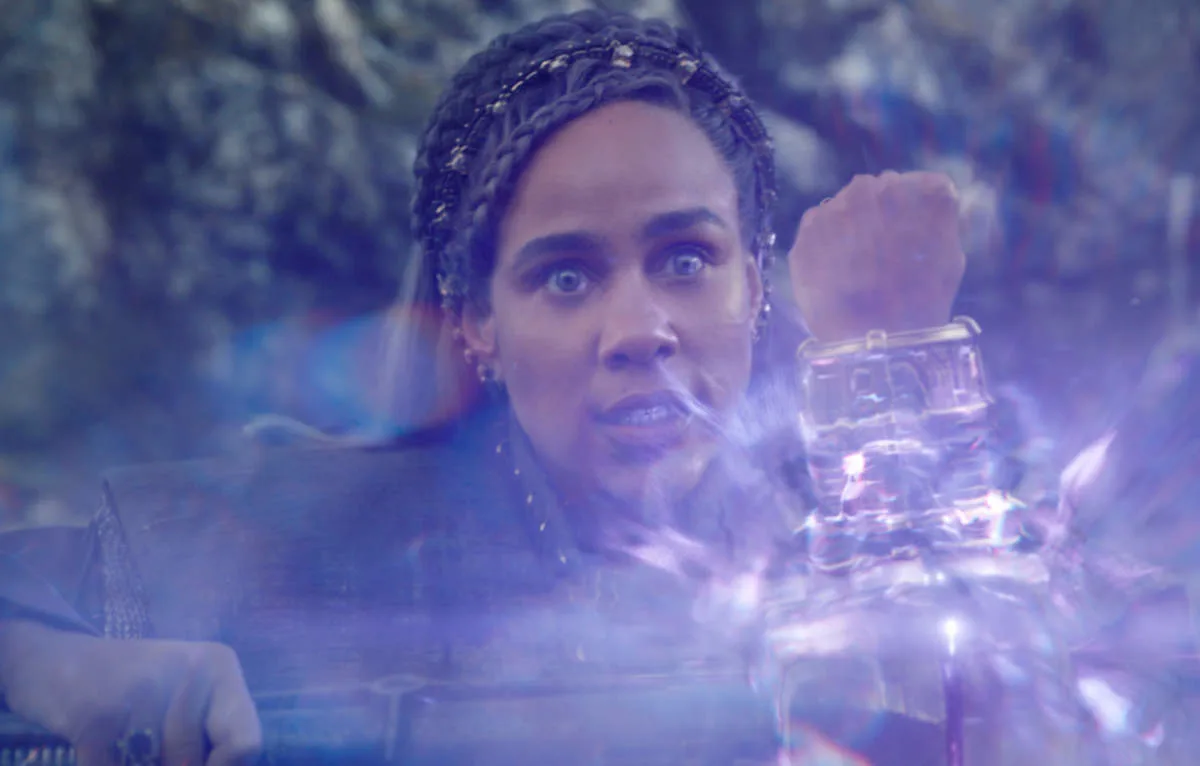
MARVEL STUDIOS’ THE MARVELS REVIEW SCORE: 6 OUT OF 10
Walt Disney Pictures will release Marvel Studios’ The Marvels in theaters on November 10, 2023. The film is rated PG-13 for action/violence and brief language.
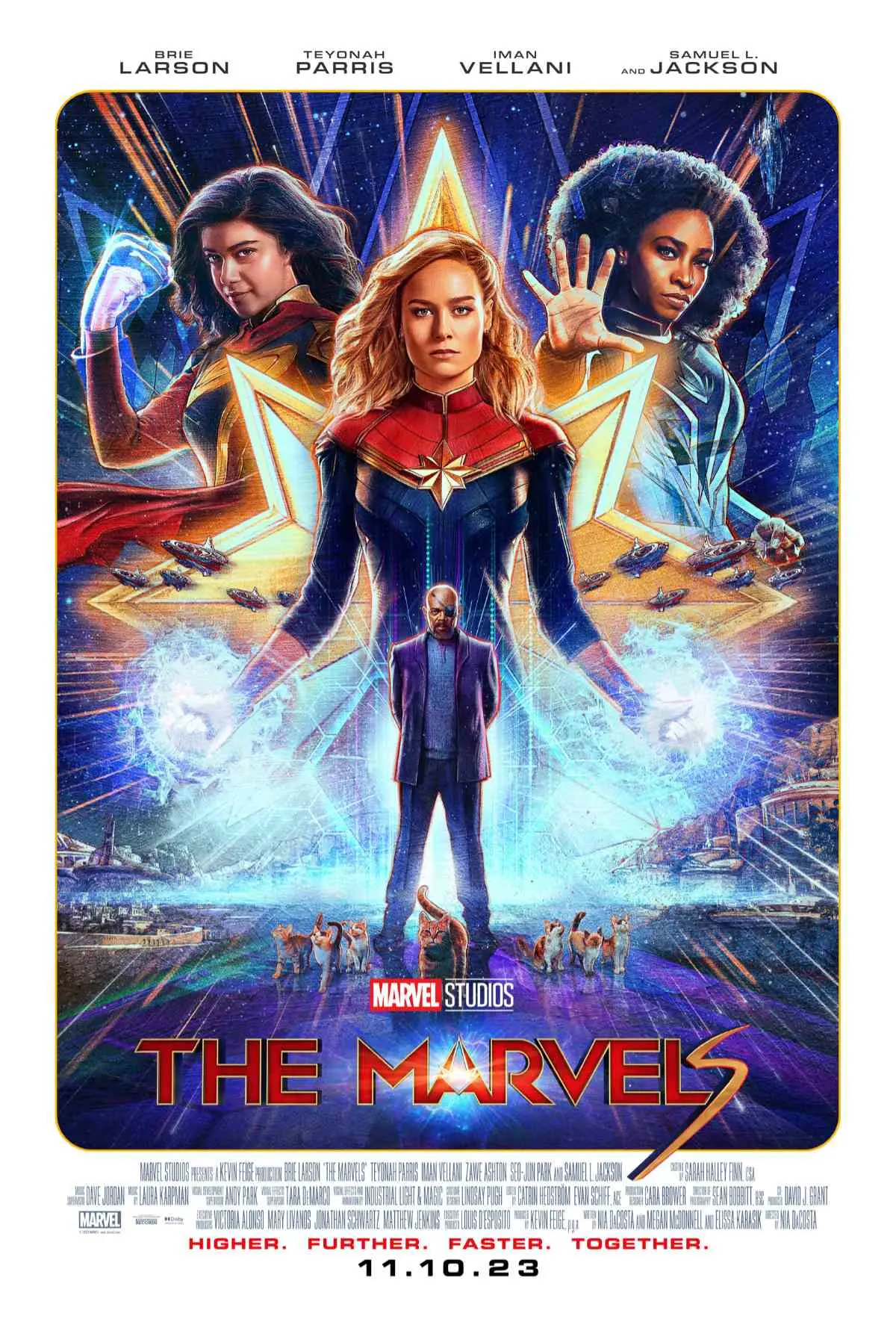
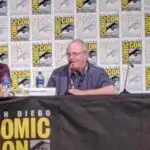
Joshua Starnes has been writing about film and the entertainment industry since 2004 and served as the President of the Houston Film Critics Society from 2012 to 2019. In 2015, he became a co-owner/publisher of Red 5 Comics and, in 2018, wrote the series “Kulipari: Dreamwalker” for Netflix. In between, he continues his lifelong quest to find THE perfect tomato soup and grilled cheese sandwich combination.